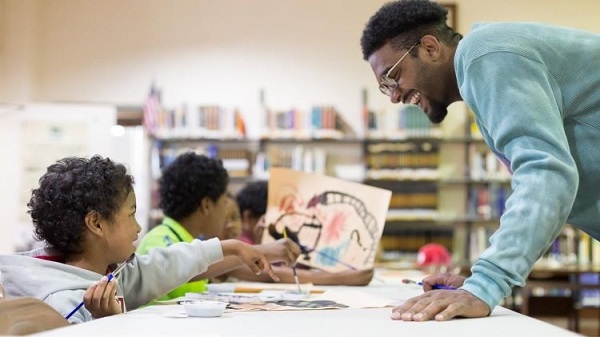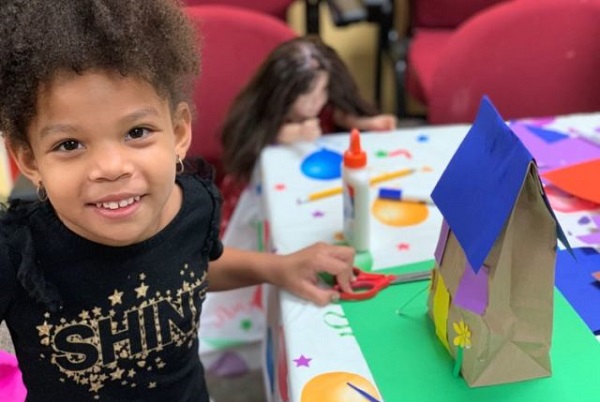
Kids express themselves through free ProjectArt classes around Pittsburgh
This story first appeared in NEXTpittsburgh, which publishes Kidsburgh.
Budget cuts have left big holes in schools’ art departments. That’s where ProjectArt comes in.
The national program, which launched in Pittsburgh in 2017, provides free art classes to students ages 4 to 18. Locally, 250 kids are enrolled in the program, which operates at various Carnegie Library of Pittsburgh branches.
ProjectArt aims to empower youth in divested communities by giving them an opportunity to express themselves creatively, overcome social barriers and foster socialization and critical thinking skills. Shivani Trivedi, a Pittsburgh resident and trustee of ProjectArt, was instrumental in bringing the program to her hometown.
“We started out in Harlem in 2011, and we got a lot of press coverage,” says Alexandra Behette, ProjectArt’s director of external affairs. “We received emails from people asking us to come to Pittsburgh. We did research and found there was definitely a need for quality, consistent, visual arts education in the area. We developed a relationship with the Carnegie Library of Pittsburgh and it blossomed from there.”
One-hour sessions, divided into three age groups (4-7, 8-12 and 13-18), are held three days a week in Carnegie Library branches throughout Pittsburgh: Allegheny, Woods Run, Beechview, West End, East Liberty and Carrick. Classes are capped at 15 students.
Although the schedule follows a traditional September-to-May school calendar, new students can enroll at any time. Parents can register their children online or fill out a form at one of the partner libraries.
The curriculum is based in the visual arts, such as painting and sculpture, and taught by six artists-in-residence. New instructors are hired each year in a variety of disciplines.
Participants can essentially stay with the program from when they start to age 18. Families of students also benefit from the program, says Nina Friedman, director of Pittsburgh-based operations for ProjectArt. While their child is learning art, family members have the opportunity to discover the library’s other resources.
While most students are in elementary school, ProjectArt is working to engage more teenagers. The Pittsburgh Foundation recently granted the organization’s wish to purchase calligraphy and screenprinting tools and cameras. Other supplies are provided by Blick Art Materials.
ProjectArt instructor Angela Velez is a trained writer and editor. While pursing a master’s degree in fiction, she started experimenting with mixed media, adding graphic, video and audio elements to her stories.
“After I finished my MFA, I knew I wanted to keep working with students and stay involved in Pittsburgh’s art scene,” Velez says. “ProjectArt was a way to get back into teaching, give back to my local community and keep up my own artistic practice.”
Velez teaches three classes spanning all age levels. Each week, she helps students explore different mediums, artists or styles of artwork. One day students will paint neighborhood scenes, the next they might build piñatas. She is using library resources for a mixed-media narrative she is working on that documents how East Liberty has evolved over time.
“ProjectArt is an incredible way to introduce students to art, foster creativity and instill the tremendous resources available to them at the public library,” she says. “This program really reinforces the library as a vibrant and modern community center.”
Annual exhibitions of students’ and instructors’ work are held each spring at all the ProjectArt locations in Chicago, Detroit, Los Angeles, Miami, New Orleans, New York, Pittsburgh and San Francisco.
The organization hopes to expand to 10 cities by 2021. It may offer classes in additional Carnegie Library branches based on funding and need.
“ProjectArt is committed to empowering children, artists, families and communities in Pittsburgh,” Behette says. “We are looking to provide youth a space to express themselves creatively, using art to amplify their voices and fill in the gap where budget cuts have impacted them.”
